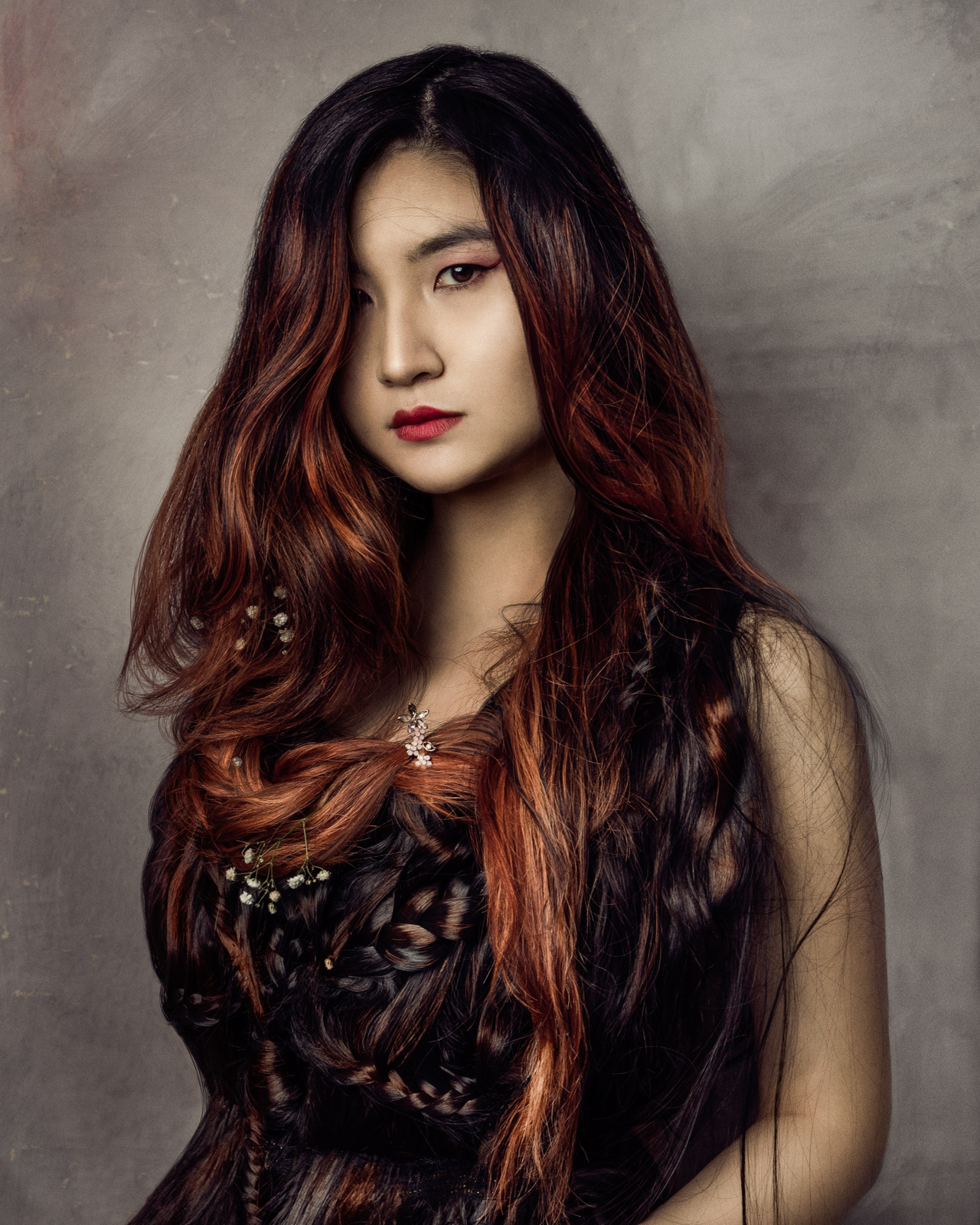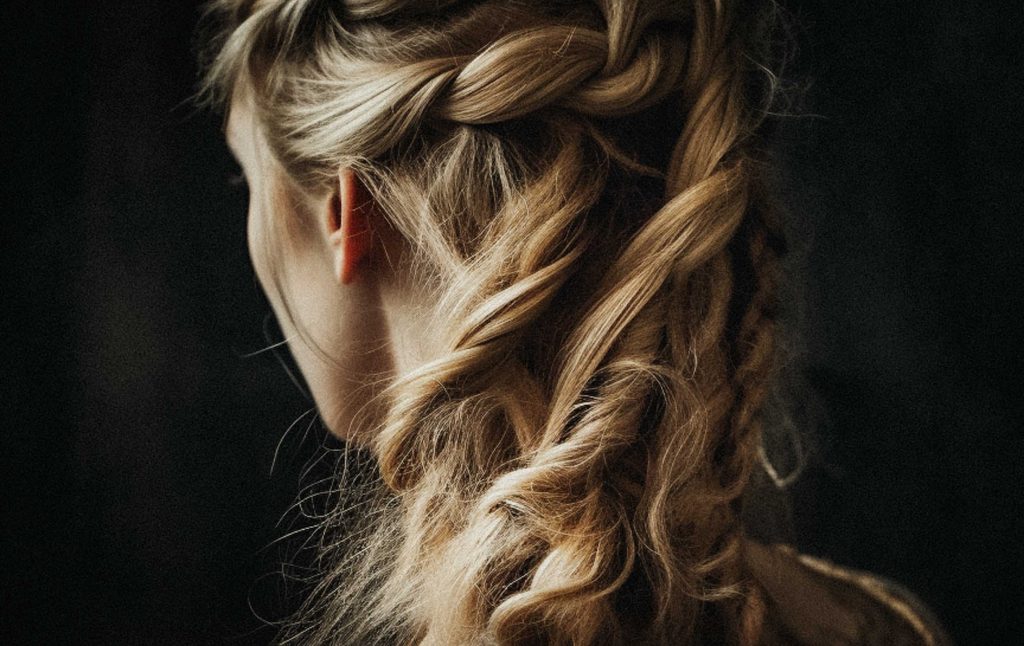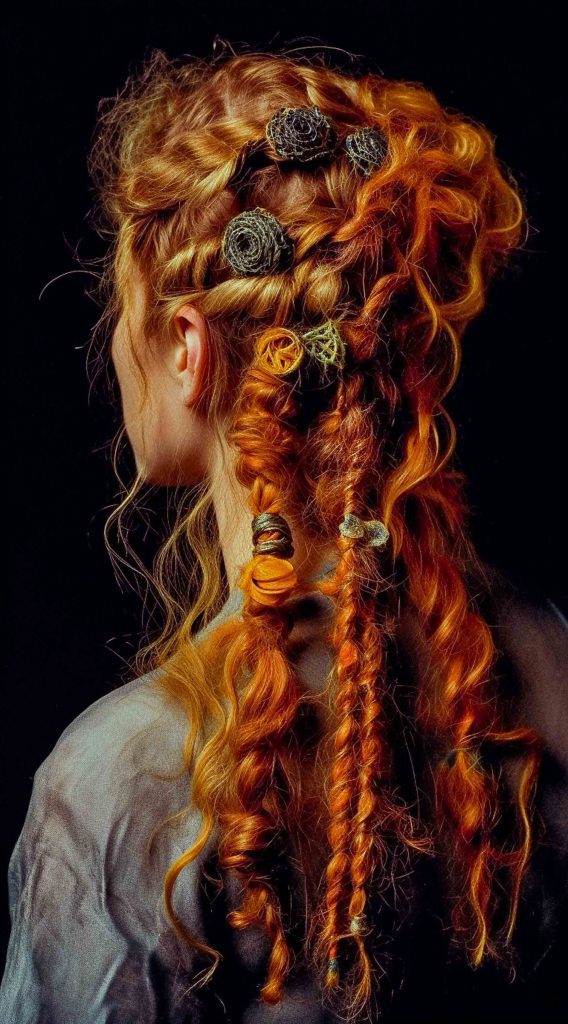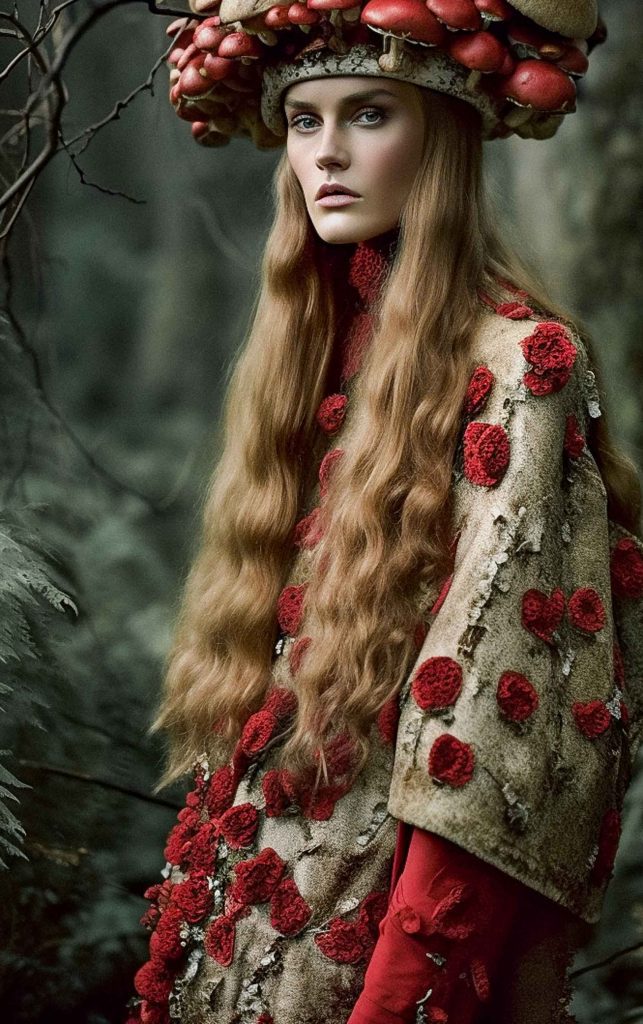
02 May Unraveling the Mythological Symbolism of Hair: The Feminine Power

European Mythology and Hair Symbolism
In European mythology, hair has been a recurring symbol, often associated with strength, beauty, and personal identity. For example, the biblical story of Samson and Delilah narrates the connection between Samson’s remarkable strength and his long, uncut hair. Upon Delilah’s betrayal, she cuts Samson’s hair, leading to his loss of power and eventual downfall.
Norse Mythology and Fertility
In Norse mythology, the goddess Sif is celebrated for her lustrous golden hair, which symbolises fertility and prosperity. Following the mischievous act of Loki, who cut off her hair, Thor, her husband, demanded that Loki replace it with hair crafted from gold, thereby restoring Sif’s beauty and influence.
In Norse mythology, hair plays a significant role in conveying themes of fertility and abundance, extending beyond the story of Sif’s golden locks. The goddess Freyja, revered as the embodiment of love, fertility, and beauty, is often depicted with flowing, radiant hair that symbolizes her association with sensuality and fecundity (Britt-Mari Näsström, Freyja – The Great Goddess of the North, 1995). As the patroness of married love and childbirth, Freyja’s hair serves as an emblem of her divine status and her vital role in the well-being of the Norse people.
Another example from Norse mythology is the tale of the dwarves Brokk and Sindri, who crafted a golden boar named Gullinbursti as a gift for the god Freyr, the brother of Freyja (Snorri Sturluson, The Prose Edda, 13th century). Gullinbursti, which translates to “Golden Bristle,” is covered in golden hair that shines like the sun and possesses the power to illuminate the darkest of nights. The boar’s golden hair represents the life-giving qualities of the sun, and its connection to Freyr further emphasises the theme of fertility within Norse mythology.
The intertwining of hair symbolism and fertility in Norse mythology reflects the deep connection between physical appearance and divine attributes. The depiction of deities with lustrous, healthy hair not only highlights their beauty but also serves as a visual representation of their life-giving powers and their essential roles in the natural world. This association underscores the cultural significance of hair as a symbol of vitality and abundance, transcending the boundaries of mythology and permeating the daily lives of the Norse people.
Sources:
1. Britt-Mari Näsström, Freyja – The Great Goddess of the North, 1995.
2. Snorri Sturluson, The Prose Edda, 13th century.



Polish Mythology and Feminine Allure
Polish folklore is rich in tales that underscore the importance of hair, particularly in the context of feminine allure. The myth of the rusalki, enchanting mermaid-like spirits, features these beings with long, flowing hair (Mikołaj Gliński, Polish Folklore: Mermaids, Devils and the Cult of the Dead, Culture.pl, 2015). In Polish legends, the rusalki are believed to use their mesmerising locks to entice and manipulate the hearts of men, thus symbolising feminine power.
The Polish mythology and folklore are deeply rooted in the country’s cultural heritage. In many traditional Polish tales, hair is an essential element, reflecting beauty, power, and connections to the past. For example, in the story of the “plait maiden” (Włosogórka), a girl with a magic plait can summon the wind and perform other supernatural feats (Stanisław Kowalski, Śląskie baśnie, legendy, podania i przysłowia, 2003).
In Polish culture, the act of braiding or styling hair has been a tradition passed down through generations, solidifying the bond between mothers and daughters (Agata Młodawska, The Art of Hair: Polish Braids and Headdresses, Culture.pl, 2017). Hair is also seen as a symbol of fertility and well-being, with customs such as the Śmigus-Dyngus, where young men would sprinkle water on young women’s hair to ensure their beauty and health throughout the year (Agnieszka Stolarczyk, Śmigus-Dyngus: Poland’s National Water Fight Day, Culture.pl, 2019).





Historically, hair has been a potent symbol of femininity, reflecting women’s connection to their ancestry and traditions. In numerous cultures, the act of braiding or styling hair has been a tradition passed down through generations, solidifying the bond between mothers and daughters.
The symbolism of hair is deeply ingrained in human consciousness, inspiring numerous artistic, literary, and fashion endeavours. Hair serves as a medium for creativity and self-expression, weaving together past, present, and future in an intricate interplay of cultural and personal narratives.
Conclusion
The exploration of hair’s symbolism in mythology, particularly in Polish culture, highlights the profound stories and meanings embedded within this everyday element. By examining hair’s significance in representing feminine strength, identity, and heritage, we can better appreciate the connections between mythology, culture, and individual expression. This understanding encourages a renewed appreciation of the power and beauty of hair and the unique, timeless bond it represents for women across cultures.
Keywords: hair symbolism, European mythology, Polish folklore, feminine power, cultural heritage



No Comments